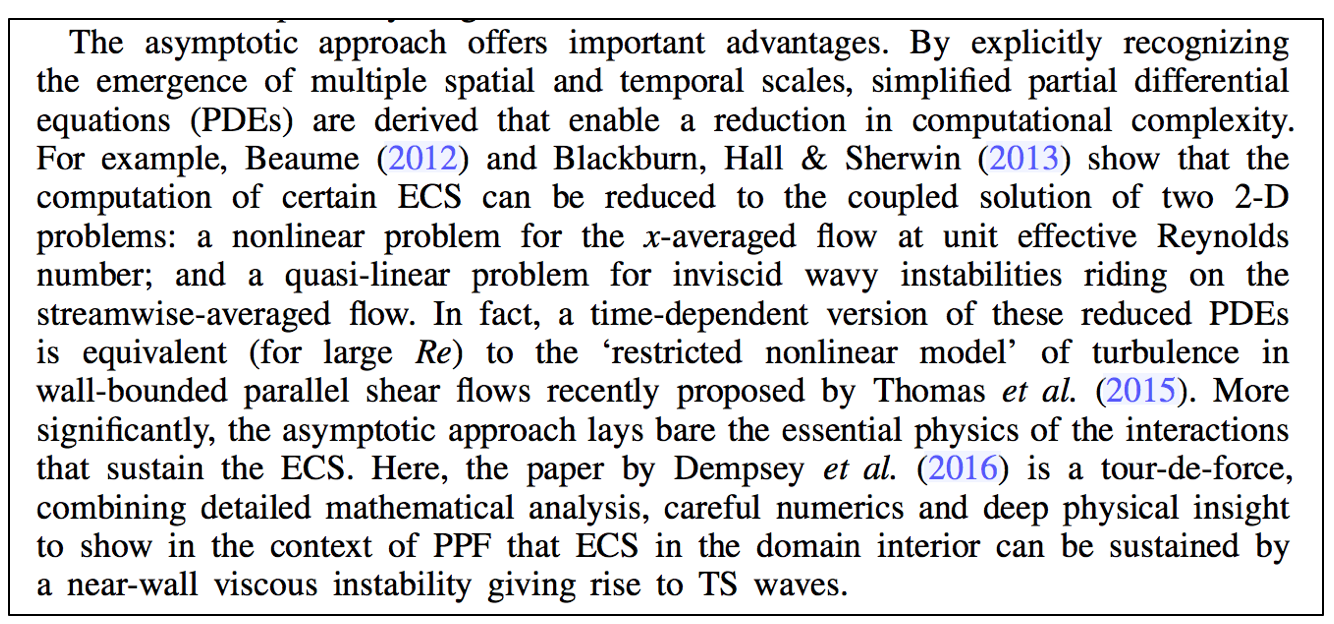Contents
(Author Year)
General Notes
The purpose of any citation is to provide a way for a reader to find the original work. To that end, any citation system is just that—a system. Follow the system for success. For JFM, follow these rules and examples.
- On the References page, citations are listed in alphabetical order, listed by the last name of the first author.
- Any line after the first line for each entry is indented.
- Insert one full blank line between entries.
- Individual entries are not numbered.
- Author names are in small caps.
- Other specialized instructions are on this page and here.
Understand that if a specific example is not provided, you can infer how to move ahead. For example, if you have a book with five authors, there is no example of that offered in this guide. However, you can look at how other listings handle five (or more) authors and apply it to your needs.
LaTex
As well, if you want to deploy LaTex in for work in JFM style, more information can be found here: http://journals.cambridge.org/action/displaySpecialPage?pageId=2860 . Using the provided templates may simplify your work, if you are familiar with LaTex. In some instances, using the LaTex would be required for article submission.
In-text Citations
Any information pulled from another source should be cited. There is almost no use of the “common knowledge” idea in the technical fields. Cite often to retain your credibility as an author, researcher, and engineer.
In-text citations follow a basic (Author year) pattern. The writer has a choice to include the referenced author/s in the sentence itself or to cite them only in the parentheses. See the example below, which also shows how equations should be handled. Also note that the original online version of the article has hotlinked the dates for convenience (not needed for most university writing).
The above example is taken from here:
Lei Wu, H., Liu, Reese, J.M., & Zhang, Y. (2016). Non-equilibrium dynamics of dense gas under tight confinement. J. of Fluid Mech. 794, 252-266.
Another example is below, where the author uses the names of the authors in the sentence itself, followed by the year in parentheses. This is also acceptable. See the example below for an eloquent use of this method.
The above example is from this article:
Chini, G. P. (2016). Exact coherent structures at extreme Reynolds number. J. of Fluid Mech. 794, 2.
Also of interest in this example is the use of single quote marks around the phrase restricted nonlinear model. As the JFM is published in the UK, this is appropriate. However, if you are writing for another organization but using the JFM as a model for citations—and your writing is based in a US organization—use double quotes in this instance. (In the US, the only use of single quotes is when you have a quote within a quote…a rarity in technical writing.)

